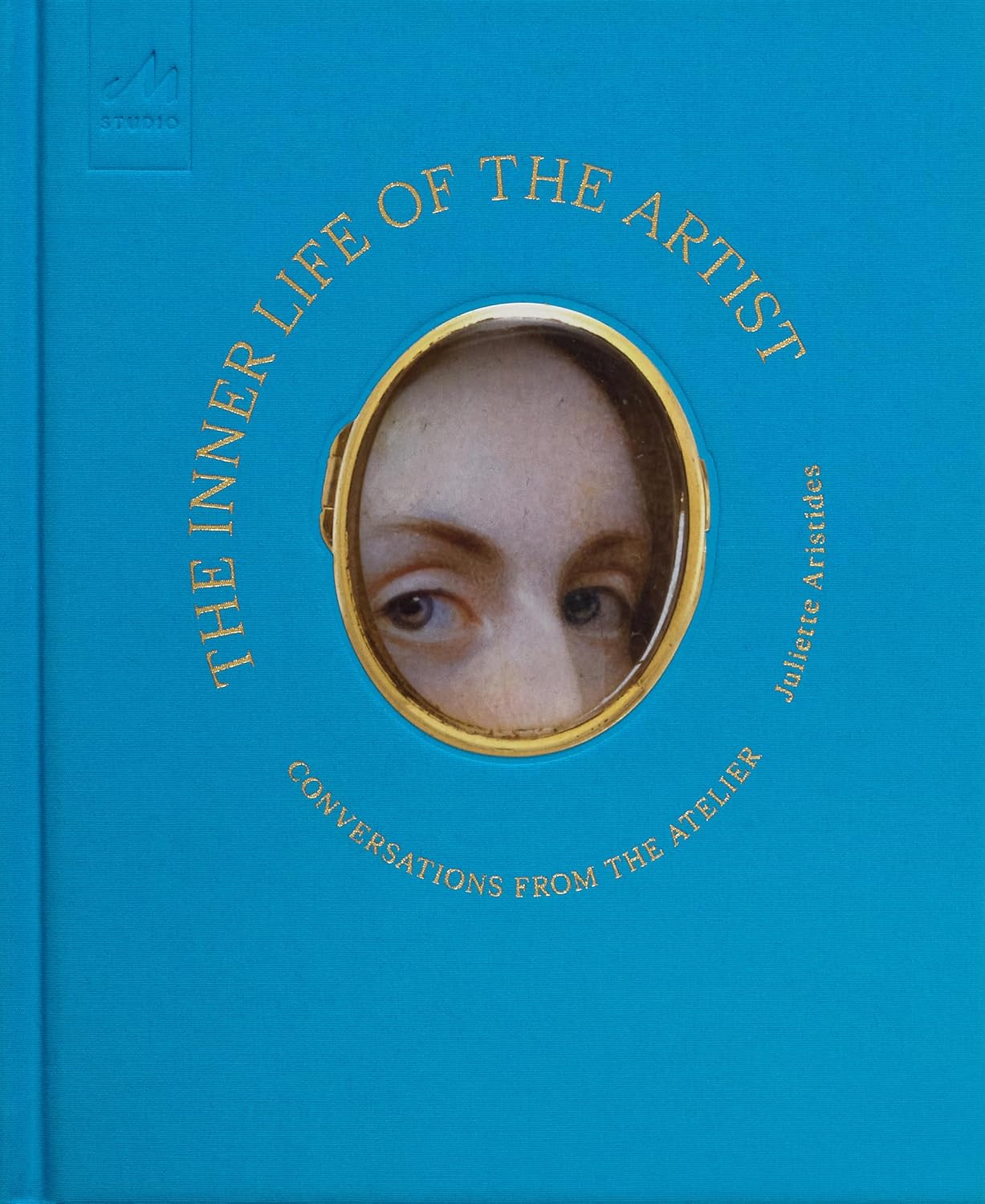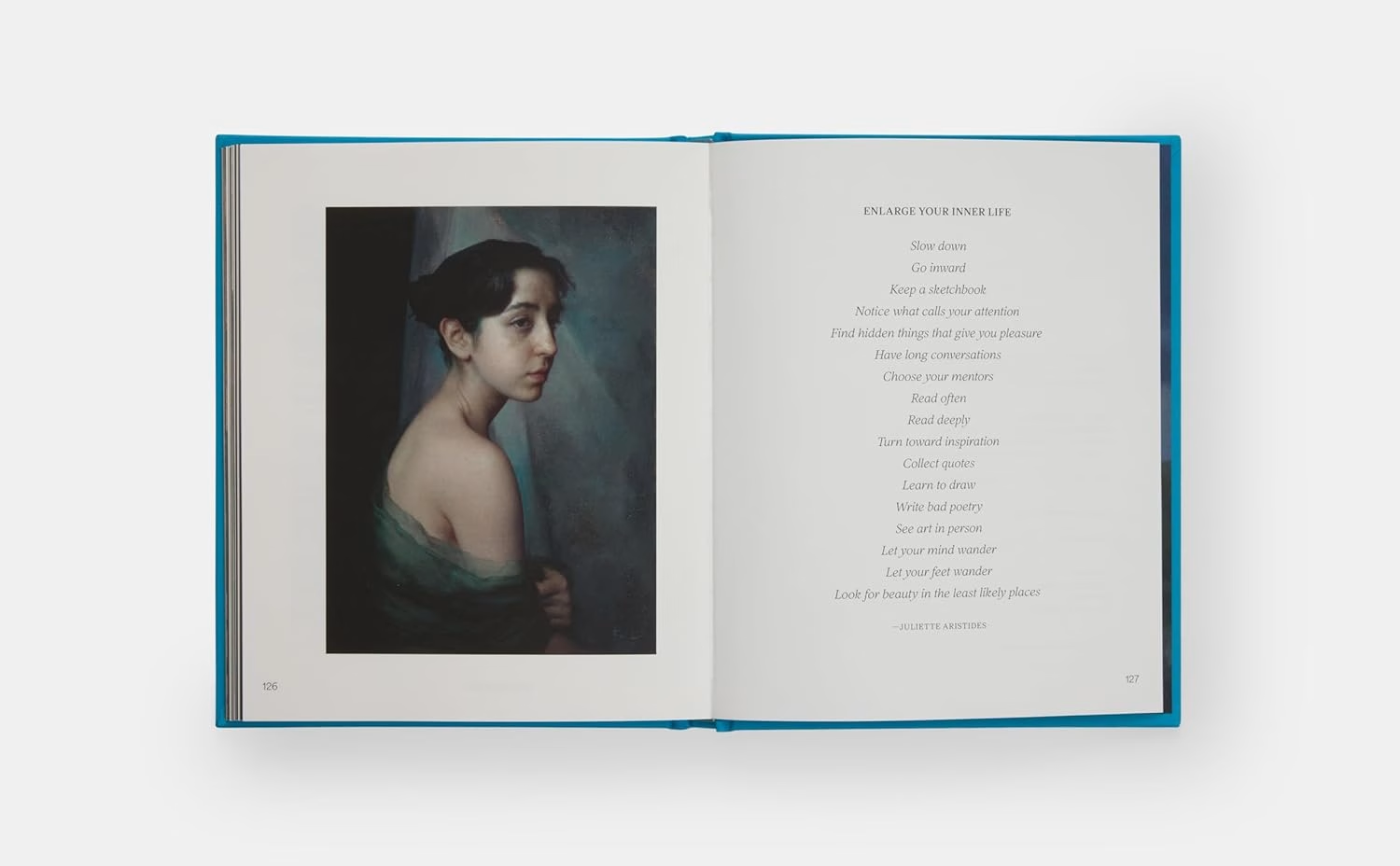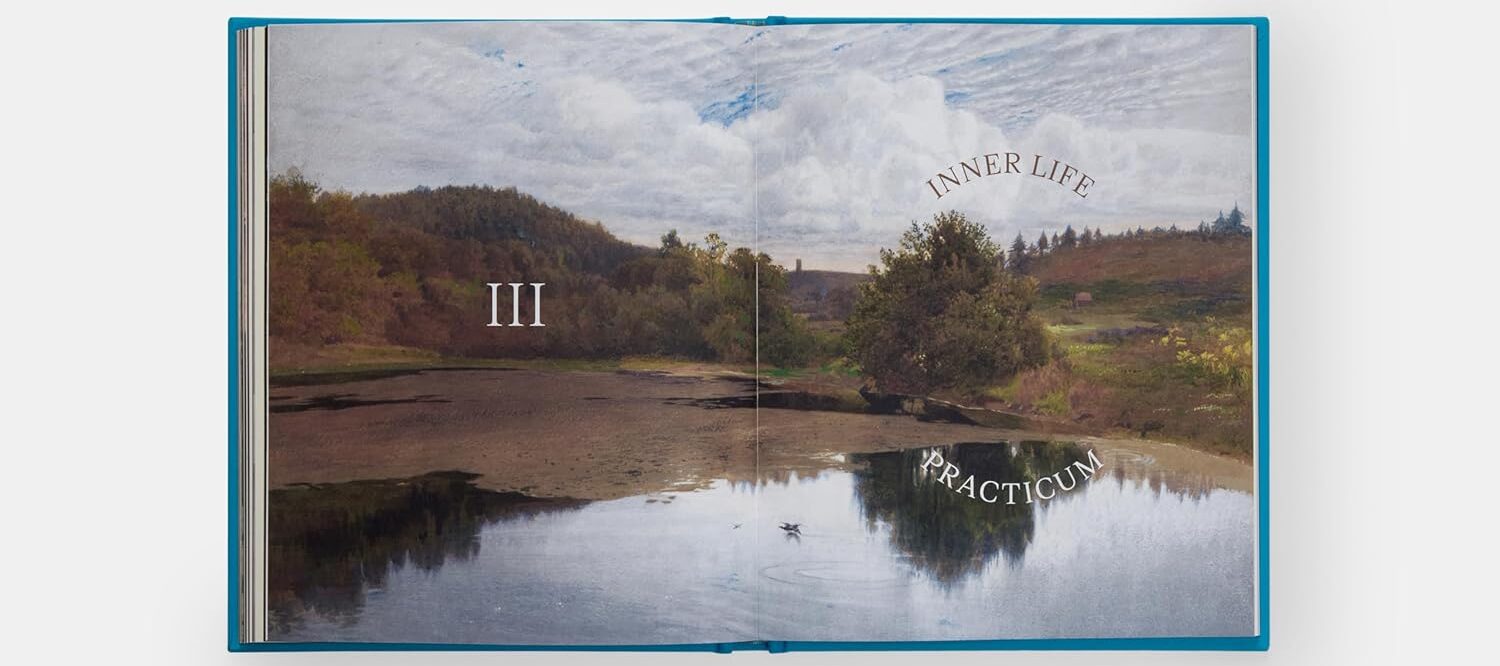
The Inner Life of the Artist: Conversations from the Atelier (2024) is more than a book about art. It is a sincere and thoughtful invitation to inhabit the creative process through contemplation, introspection, and full presence. With a calm and profoundly human voice, Juliette Aristides weaves theory, experience, and practice into brief yet meaningful essays that not only teach us how to make art but also propose a way of being in the world through it.
Far removed from promises of quick success, the work Aristides describes is meant to unfold at a deliberate, meditative pace. Within the book’s pages, there is a rhythm that reminds us that art, before it is technique, is attention. It begins in the way we observe and attune ourselves to the world and in our ability to respond—with a pencil, a brush, or silence—to what stirs us. Aristides guides us beyond methods and materials to the intimate realm of creative consciousness, self-exploration, and the deep connection between inner life and artistic expression.

One of the most striking aspects of the book is its curated selection of images—visual echoes of the book’s themes. Each image feels chosen not just for its beauty but for its ability to speak the same subtle, profound language as the words. They serve as contemplative pauses, allowing the reader to observe and continue the inward journey the book proposes. These images are windows to other gazes, hands, and hearts that have felt the same quiet urgencies across time. They span a variety of media, from photography to painting. Isabel Quintanilla Martínez’s painting The Red Door (1978) stands as a metaphorical threshold into the reading experience—the open door seems to invite us in. There are numerous other artworks interwoven throughout the book—from Rembrandt’s intimate self-portraits to paintings by Aristides herself.
Aristides interlaces quotes from both historical and contemporary artists that enrich each reflection and grow the chorus of the atelier. She also offers simple yet significant exercises designed to awaken perception and refine attention. One such exercise, inspired by the 19th-century artist and teacher Horace Lecoq de Boisbaudran, encourages drawing from memory. The practice begins with careful observation: trace the object’s forms with your eyes, then hide it and draw from memory, free of concern for precision. After a pause, return to the object, attending to details of proportion, light, and line, and revise your drawing. Later, repeat the process, noticing whether clarity, ease, and understanding have deepened. This practice is brought to life in the book through Charles Weed’s painting Shell on Grey Green (2022). Aristides invites us to observe the image of the shell with care, to internalize its shape, and then to draw it from memory. In doing so, we engage not only with our eyes, but with our attention and our capacity to see—not just look.
Another enriching element of the book is the author’s willingness to share her own personal experiences. Rather than presenting herself as a distant authority, Aristides opens herself to the reader with honesty and humility. Her stories illuminate her thoughts and reveal the origins of her convictions. As Aristides writes, “There is no quick way to enlarge a soul. Efficiency and perfection mean nothing to the part of ourselves that longs for a deep connection and peek behind the veil of the world.” Intimate moments such as this one enhance the reading experience, making it feel companionable and human.
The Inner Life of the Artist is light in form but deep in spirit. Its warm tone and evocative visuals stir a quiet longing: to be present, to go outside and see the world with fresh eyes. It is a book that invites stillness, wonder, and that fertile silence from which creativity often springs. Ideal for artists, writers, teachers, or anyone who senses that art is a way of being in the world, this book offers itself as a space for reflection and connection.
Purchase your copy of The Inner Life of the Artist from NMWA’s Museum Shop.
